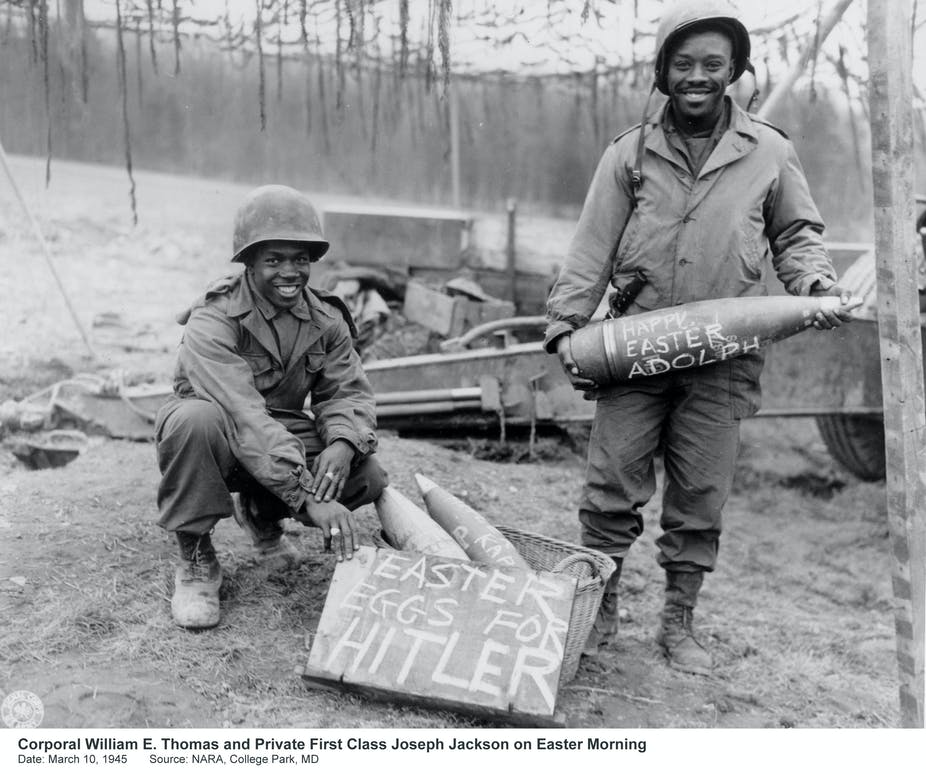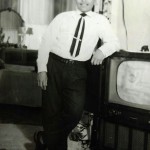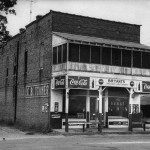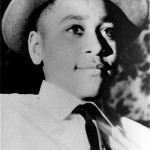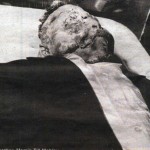When the grandchildren of enslaved Africans returned home from Europe after fighting World War I, they returned with the hope that after serving honorably, their own country would appreciate their bravery and sacrifice and see to it that their own dreams of liberty be realized.
Needless to say, someone didn’t follow the script.
Well, 1945 marked the second wave of Black veterans to return from liberating Europe only to be expected to downshift back into a life where they didn’t live by the same freedoms that they had risked their lives for others to enjoy.
Fool me once….
The NAACP’s legal counsel, headed by future US Supreme Court Justice Thurgood Marshall, had begun a decades long campaign to use the legal system to reverse Plessy vs. Ferguson, the landmark case that established the principle of Separate but Equal that segregation in the United States was built upon.
In addition to trying to legally challenge Jim Crow laws across the south, the NAACP had been lobbying, for years, with little to show for it, to get some kind of anti-lynching legislation passed in congress, but Southern conservatives in both houses of the legislature always moved to block anti-lynching legislation or filibuster in the Senate to prevent these anti-lynching laws from even being voted on.
In South Carolina, a Black WWII veteran, while wearing his uniform, had his eyes gouged out just for complaining about the rickety buses and crappy service he had to deal with in Jim Crow transportation. Another Black WWII veteran, wearing his uniform, defiantly refused to give a white man a war memento that he proudly wore for his service to his country. He was dismembered, castrated, and then blow-torched.Fortunately, during World War II, there had been a bit of a lull in lynching in the South. Probably due to 12 million Americans busy off fighting fascists. But after the war was over, lynching in the South suddenly came back into fashion with a vengeance. What got this season started? Black veterans from World War II wearing their military uniforms in public.
The Ku Klux Klan. You remember them, right? Marcus Garvey had called them the “best friend of the Black man”. Well these “friends of the Black man” were taking offense to Black veterans returning home from fighting Hitler and still wearing their military uniforms. The expectation was, then, as it is now, that you are supposed to show respect for the uniform as well as the person wearing it, but this was causing problems because although they felt the need to show respect for the uniform, they didn’t want to show any respect to the Blacks wearing that uniform.
As far as Southern Whites were concerned, they felt Black veterans were deliberately manipulating them into disrespecting the United States of America by wearing the uniform, knowing full well they wouldn’t or couldn’t show respect to the Blacks wearing them.
Oh, what a dilemma this was.
And believe me that is why the Black veterans were wearing them. They knew darned well what they were doing. They were showing that they had proudly served their country, and they knew the respect that is supposed to come to those who wear the uniform. This might not seem like that big of a deal in 2014, but in 1945, considering the world these men were in, there was nothing they did in Europe that took more courage than what they were doing right here.
The KKK complained that these Black veterans walked around without fear. They looked them in the eye when they spoke to them. Chins up. Backs straight. Proud. Defiant. Something had to be done and quick!
Eventually, they concluded that, if Blacks had changed, well, they couldn’t do anything about that. But what the KKK could do is make damn sure that Blacks knew that the Ku Klux Klan hadn’t changed.
In South Carolina, a Black WWII veteran, while wearing his uniform, had his eyes gouged out just for complaining about the rickety buses and crappy service he had to deal with in Jim Crow transportation. Another Black WWII veteran, wearing his uniform, defiantly refused to give a white man a war memento that he proudly wore for his service to his country. He was dismembered, castrated, and then blow-torched.
Doing things like this under normal circumstances might’ve been sufficient to putting the social order back into some sense of normalcy, but instead these Blacks just seemed to be getting angry.
I guess what the Ku Klux Klan had said was true, these niggers were different.
Then, the NAACP finally hit a ball out of the park. In May of 1954, the Supreme Court, in a unanimous decision, struck down state-sponsored segregation of elementary schools as unconstitutional. This was a complete about face from the 1896 Plessy v. Ferguson case which upheld the constitutionality of state laws requiring racial segregation in public facilities. It was now time for phase two to go into action and finally desegregate the entire South. An ambitious goal like that couldn’t be accomplished in the courts. This next phase of the campaign would require boots on the ground, so to speak.
Then August 28, 1955 happened.
On the evening of August 28, 1955, a 14-year-old Black boy from Chicago named Emmett Till, who had been visiting his cousins in Money, Mississippi was awoken in the middle of the night and forcibly removed from the home of his great uncle Mose Wright at gunpoint by a Black man and two White men.
The three men took Till to a barn, beat him and gouged out one of his eyes, shot him through the head and then disposed of his body in the Tallahatchie River by weighting the body down with a 70-pound cotton gin fan secured around the child’s neck with barbed wire.
All this because he was accused of making a pass at a White woman, 21-year-old Carolyn Bryant.
The next day when people noticed that blood had pooled in the back of Roy Bryant’s truck, they assumed that he had shot a deer, until he told them, “That’s what happens to smart niggers”.
Both Roy Bryant and his half-brother J. W. Milam were charged and then found not guilty on the technicality that the body of Emmett Till was so badly beaten and disfigured that the defense argued that no one could really be sure that body belonged to the child. Then, to add insult to injury, only months later, protected against double jeopardy, both Roy Bryant and his half-brother J. W. Milam agreed to be interviewed by Look Magazine for $3,900 and now openly admitted to killing Till but refused to admit that they had done anything wrong.
“Well, what else could we do? He was hopeless. I’m no bully; I never hurt a nigger in my life. I like niggers—in their place—I know how to work ’em. But I just decided it was time a few people got put on notice. As long as I live and can do anything about it, niggers are gonna stay in their place. Niggers ain’t gonna vote where I live. If they did, they’d control the government. They ain’t gonna go to school with my kids. And when a nigger gets close to mentioning sex with a white woman, he’s tired o’ livin’. I’m likely to kill him. Me and my folks fought for this country, and we got some rights. I stood there in that shed and listened to that nigger throw that poison at me, and I just made up my mind. ‘Chicago boy,’ I said, ‘I’m tired of ’em sending your kind down here to stir up trouble. Goddam you, I’m going to make an example of you—just so everybody can know how me and my folks stand.’” – J. W. Milam, Look magazine, 1956
The murder of Emmett Till, a frightened child, taken from a home at gunpoint changed everything.
The NAACP now had their foot soldiers…
To be continued…
- Emmett Till
- Bryant’s Grocery and Meat Market in Money, Mississippi
- Emmett Till
- Emmett Till and his mother Mamie Till
- Emmett Till

